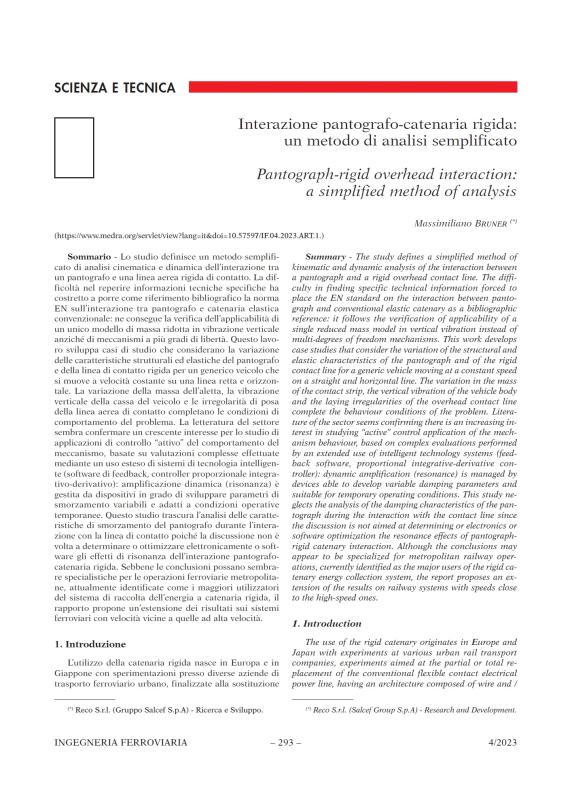
Summary - The study defines a simplified method of kinematic and dynamic analysis of the interaction between a pantograph and a rigid overhead contact line. The difficulty in finding specific technical information forced to place the EN standard on the interaction between pantograph and conventional elastic catenary as a bibliographic reference: it follows the verification of applicability of a single reduced mass model in vertical vibration instead of multi-degrees of freedom mechanisms. This work develops case studies that consider the variation of the structural and elastic characteristics of the pantograph and of the rigid contact line for a generic vehicle moving at a constant speed on a straight and horizontal line. The variation in the mass of the contact strip, the vertical vibration of the vehicle body and the laying irregularities of the overhead contact line complete the behaviour conditions of the problem. Literature of the sector seems confirming there is an increasing interest in studying “active” control application of the mechanism behaviour, based on complex evaluations performed by an extended use of intelligent technology systems (feedback software, proportional integrative-derivative controller): dynamic amplification (resonance) is managed by devices able to develop variable damping parameters and suitable for temporary operating conditions. This study neglects the analysis of the damping characteristics of the pantograph during the interaction with the contact line since the discussion is not aimed at determining or electronics or software optimization the resonance effects of pantographrigid catenary interaction. Although the conclusions may appear to be specialized for metropolitan railway operations, currently identified as the major users of the rigid catenary energy collection system, the report proposes an extension of the results on railway systems with speeds close to the high-speed ones.
https://www.medra.org/servlet/view?lang=it&doi=10.57597/IF.04.2023.ART.1.
- Aprile


